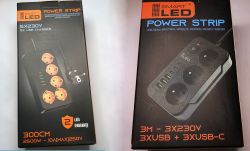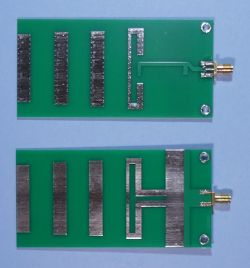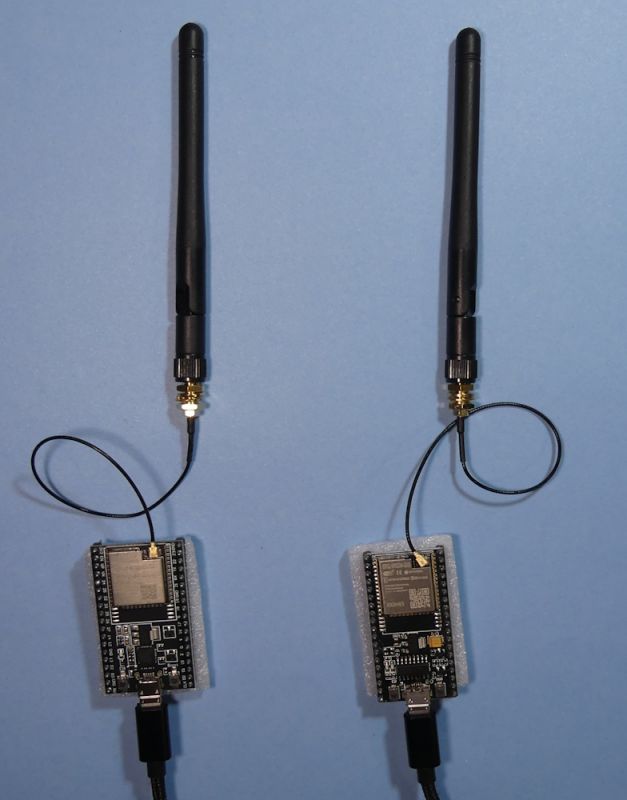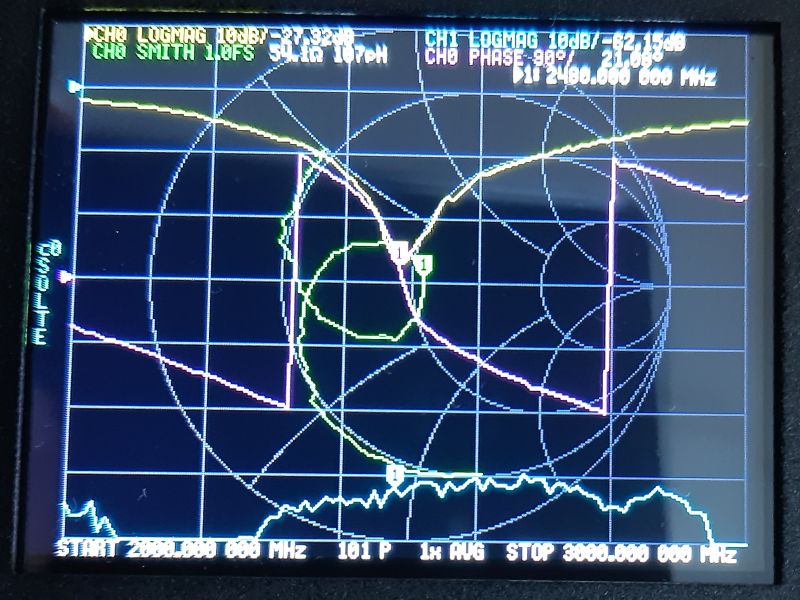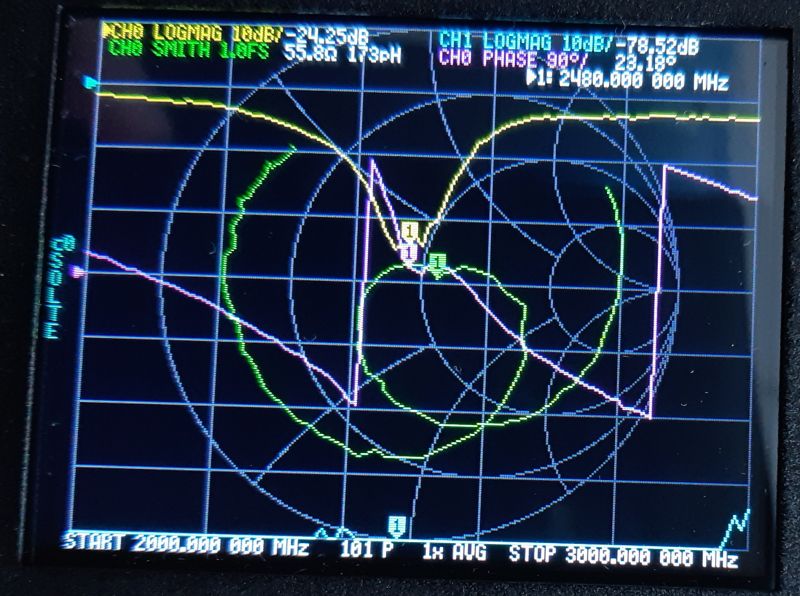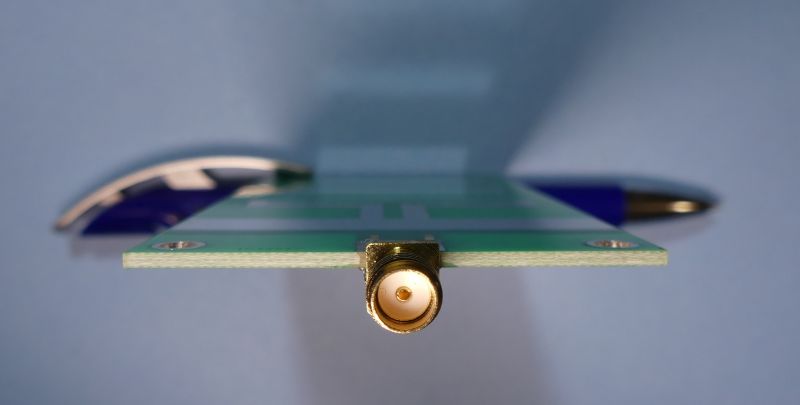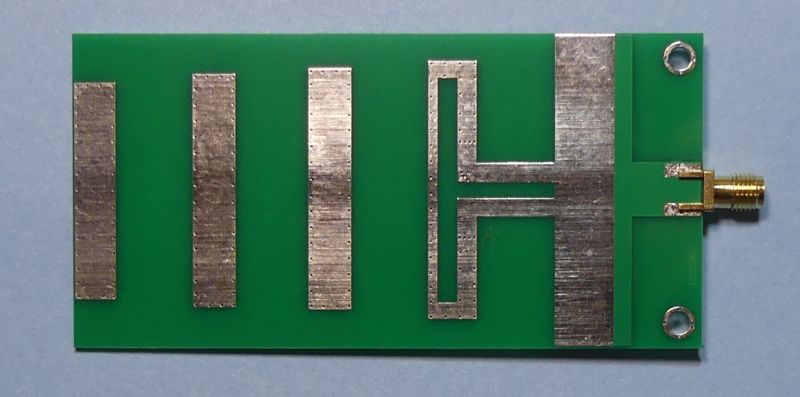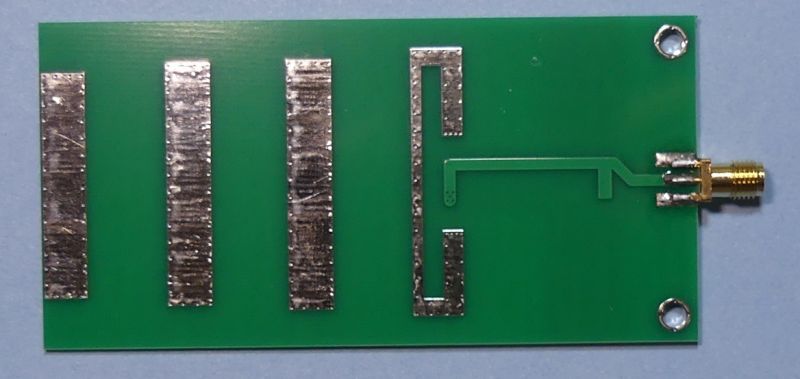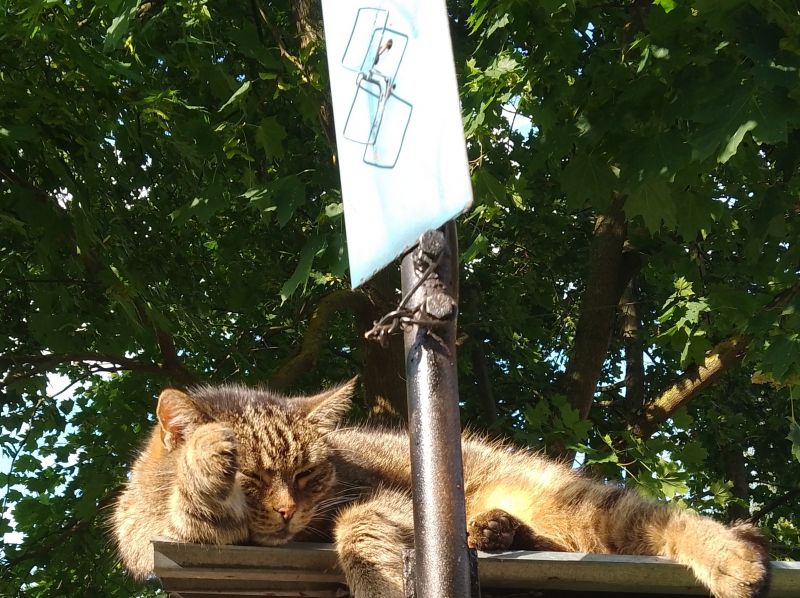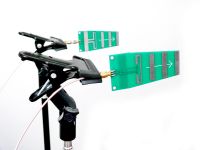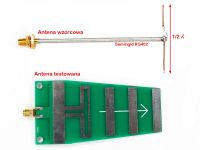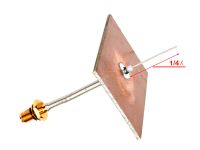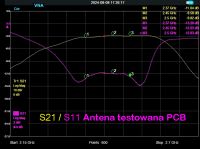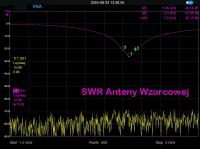There are YAGI Wi-Fi PCB antennas available on Aliexpress for the 2.4GHz band. However, I didn't need such an antenna for a typical Wi-Fi card. I'm using ESP32 modules with omni-directional antennas, which transmit information between two buildings about 300m apart after ESP-NOW. One module sends information, the other receives information, it is a one-way transmission. There is no visibility between the buildings, which are obstructed by trees and other buildings. The distance of 300m is not a special achievement, as one can find information about successful attempts with ESP-NOW at 1km with optical visibility.
Such a simple set-up allowed data transmission over a distance of 300m:
.
However, sometimes all that is needed is a reinforced concrete building with a large slab in the communication path and the range barely reaches 50m or less. I had a chance to check the included omnidirectional antennas and you can see the alignment for the 2.4GHz band:
.
What did I need the PCB YAGI antenna for?
I wanted to use similar connectivity between two buildings about 430m apart. This time the omnidirectional antennas did not provide transmission. Unfortunately I did not know whether the problem was the distance or the terrain obstacles. It remained to do a practical test and the PCB antenna went into the receiver.
Also, I had the opportunity to test whether the antenna responds to frequencies in the 2.4GHz band:
.
Interestingly, the PCB antenna detached when placed on a clapboard desk. Perhaps the moisture in the wood affected the antenna's performance?
The antenna connector required a suitable u.FL - SMA adapter:
.
After using a YAGI antenna on the receiver, transmission over approximately 430m was possible!
The dimensions of the antenna are approximately 50mmx100mm so place greater mounting requirements than an omnidirectional antenna:
.
The PCB shows three directors, a dipole and a reflector:
On the other side there is some magic with the paths concerning the w.cz
Request for a hint as to what is going on here, is this some kind of impedance matching?
The antenna has proved successful in providing adequate range for transmission, but it is not always possible to transmit data using ESP-NOW in the 2.4GHz band,
urban conditions severely hamper propagation in this band. The numerous Wi-Fi APs operating in this band also do not make the task any easier.
Have you used PCB antennas or ESP-NOW, what kind of ranges have you been able to achieve? .
Such a simple set-up allowed data transmission over a distance of 300m:
.
However, sometimes all that is needed is a reinforced concrete building with a large slab in the communication path and the range barely reaches 50m or less. I had a chance to check the included omnidirectional antennas and you can see the alignment for the 2.4GHz band:
.
What did I need the PCB YAGI antenna for?
I wanted to use similar connectivity between two buildings about 430m apart. This time the omnidirectional antennas did not provide transmission. Unfortunately I did not know whether the problem was the distance or the terrain obstacles. It remained to do a practical test and the PCB antenna went into the receiver.
Also, I had the opportunity to test whether the antenna responds to frequencies in the 2.4GHz band:
.
Interestingly, the PCB antenna detached when placed on a clapboard desk. Perhaps the moisture in the wood affected the antenna's performance?
The antenna connector required a suitable u.FL - SMA adapter:
.
After using a YAGI antenna on the receiver, transmission over approximately 430m was possible!
The dimensions of the antenna are approximately 50mmx100mm so place greater mounting requirements than an omnidirectional antenna:
.
The PCB shows three directors, a dipole and a reflector:
On the other side there is some magic with the paths concerning the w.cz
Request for a hint as to what is going on here, is this some kind of impedance matching?
The antenna has proved successful in providing adequate range for transmission, but it is not always possible to transmit data using ESP-NOW in the 2.4GHz band,
urban conditions severely hamper propagation in this band. The numerous Wi-Fi APs operating in this band also do not make the task any easier.
Have you used PCB antennas or ESP-NOW, what kind of ranges have you been able to achieve? .
Cool? Ranking DIY





